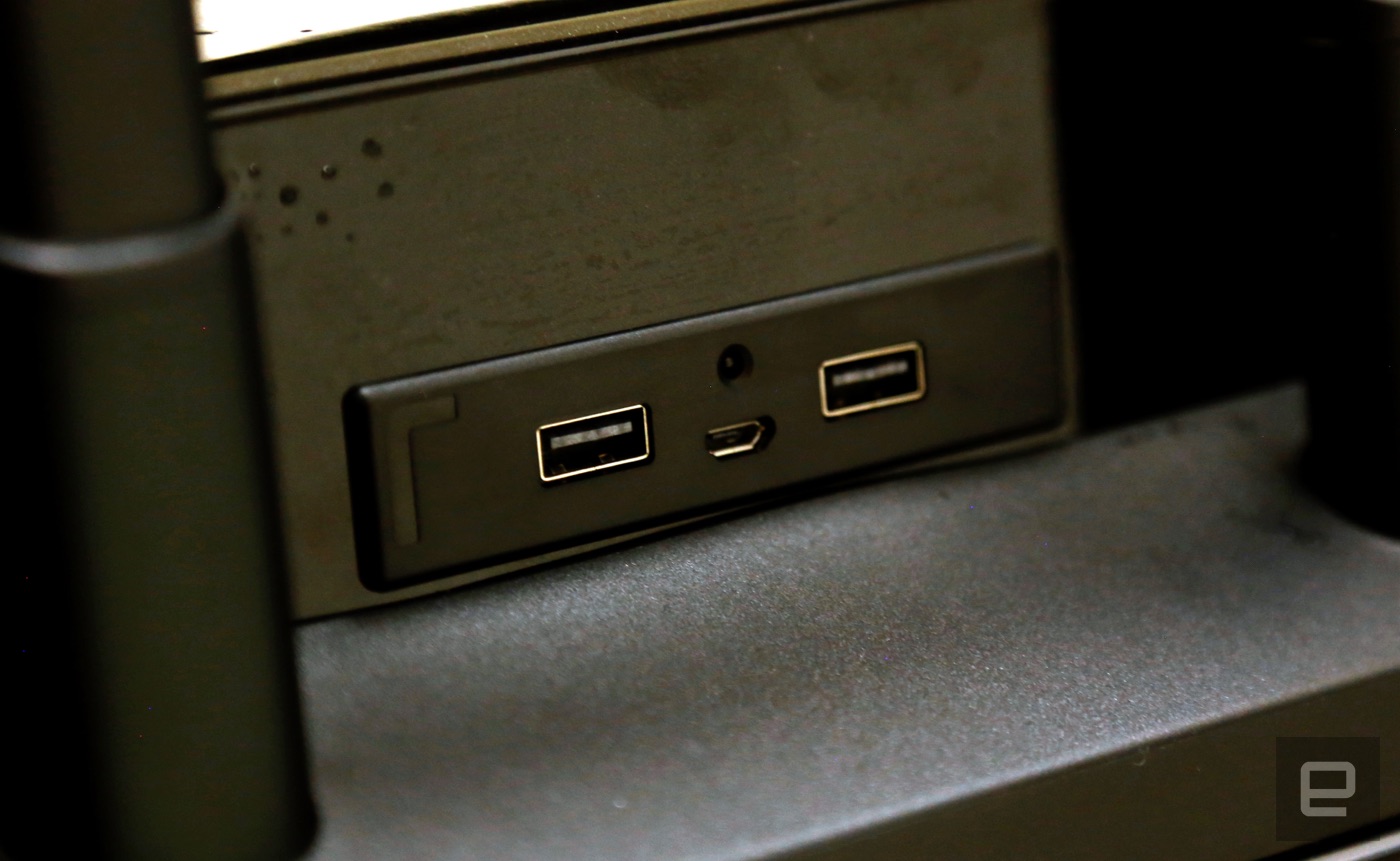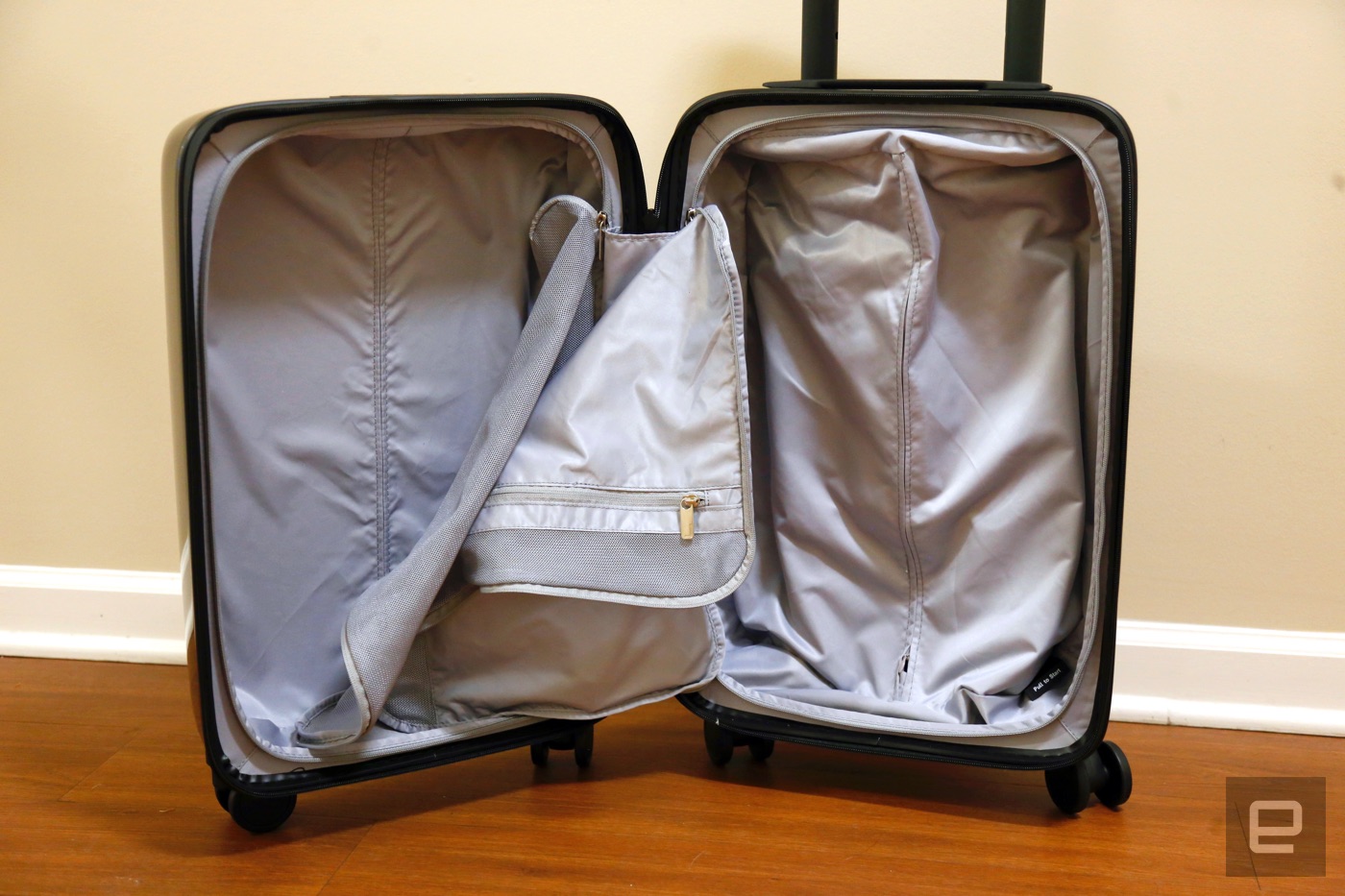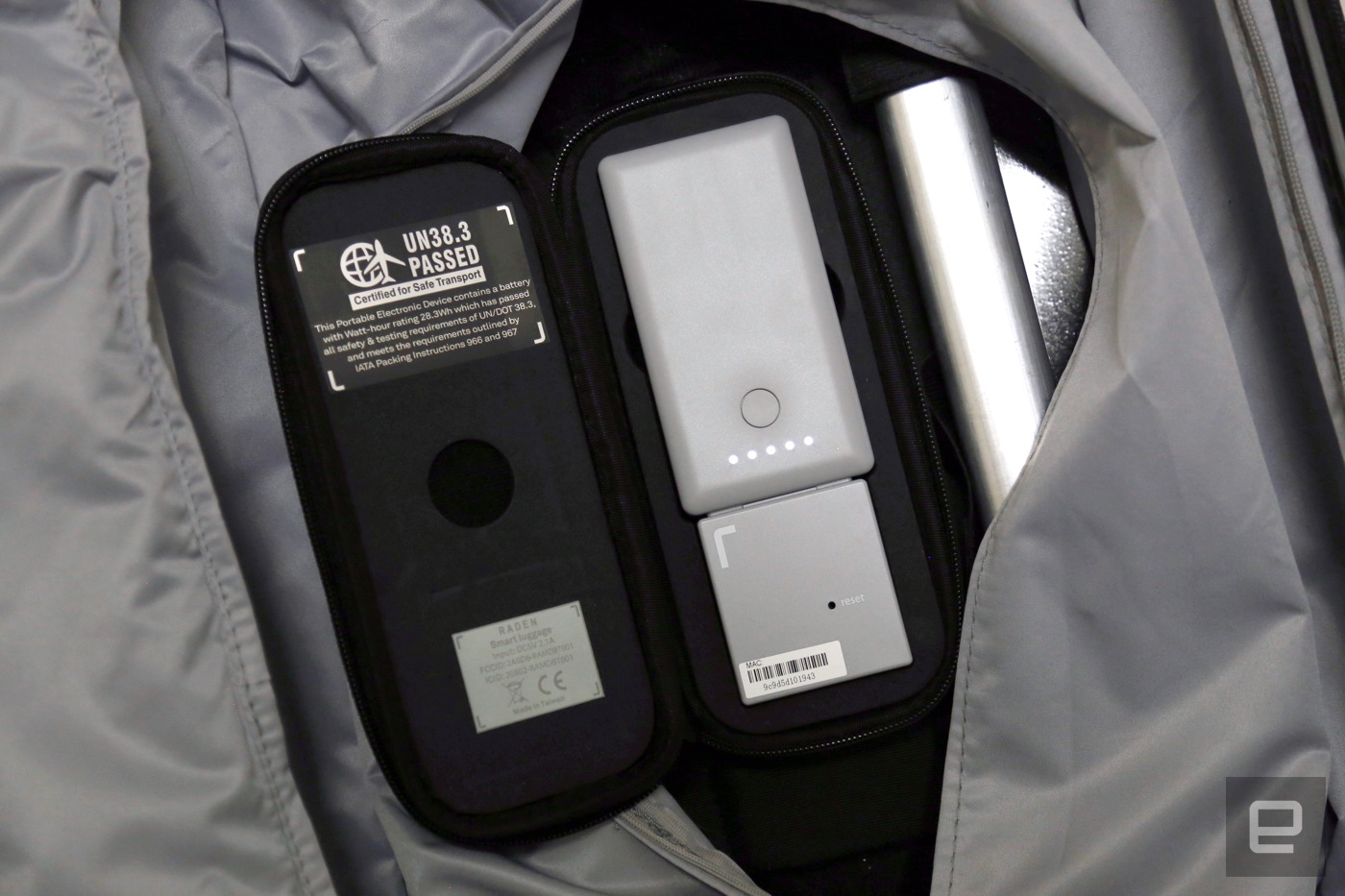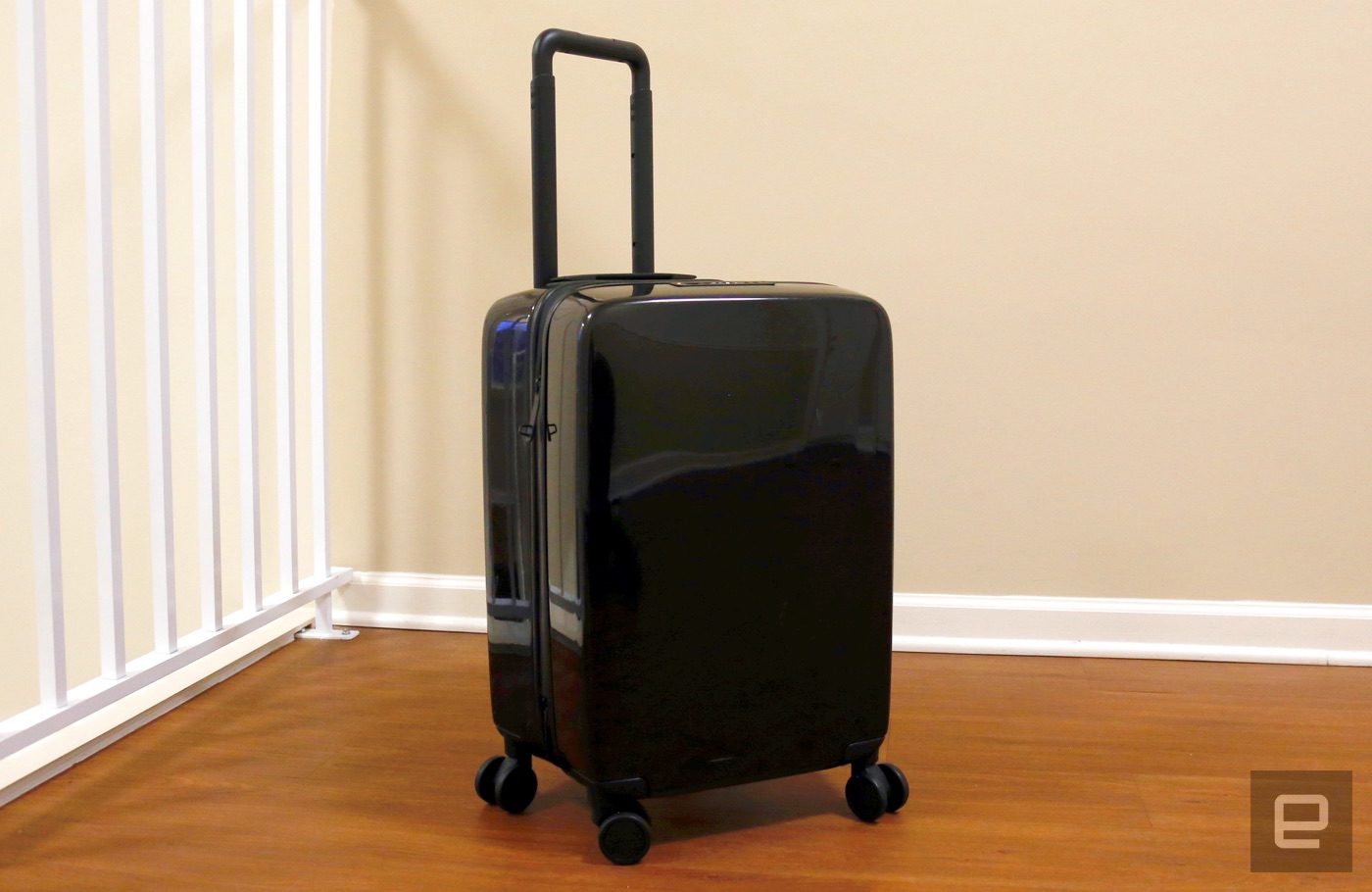I don’t think there’s anything more crucial to a frequent traveler’s arsenal than a reliable carry-on, but does it need to be smart too? A cottage industry of connected luggage makers seems to think so. While some companies have focused on packing their bags with components, a startup called Raden is trying to take a more measured approach. That’s where its A22 connected carry-on comes in: It’s a fascinating attempt at melding technological convenience with the simplicity of high-end luggage. So what exactly does $295 get you?
The A22 is a small, sleek thing, devoid of pockets, external compartments or the rugged look of other polycarbonate suitcases. In fact, the first indicator that you’re working with something out of the ordinary is a set of USB ports on the back, directly behind the telescoping handle. They’re connected to a 7,800mAh battery, which frequently came in handy for charging my gadgets at airport gates. That battery is connected to a processor and Bluetooth module inside the bag, which in turn connect to an iOS app. (An Android version is “coming soon,” I’m told.)
If this all sounds basic, that’s because it is — and that’s how the company likes it. Raden CEO Josh Udashkin told me that his team was careful not to overload travelers with connected features, preferring to let the technology act as a “lure” for an otherwise stylish, well-built bag.

Credit where it’s due: Raden did a lovely job putting this bag together. At 8.4 pounds while empty, the A22 is a surprisingly light piece, but just weighty enough that it resists tipping over when you roll it around on its four wheels. What’s more, my test unit came in a handsomely nondescript glossy black, though more colorful options are available for the style-conscious. Fair warning to potential buyers: This finish looks great at first, but don’t expect the luster to last. It doesn’t take long for scratches and scuffs to appear, especially after you’ve taken a few flights where the overhead compartments are full and you have to check the A22 in the cargo hold.
There’s also a built-in scale that sends the case’s weight to the app. So far, it’s been an accurate feature (compared with my trusty old handheld luggage scale, anyway), but it’s less useful in this carry-on model than it is in Raden’s full-size A28 bag. True, airlines are sticklers about their luggage weight limits, and few things are as aggravating as trying to stand a suitcase up on a bathroom scale. Then again, most US airlines don’t have limits on how heavy your carry-on can be; as long as you can hoist it into an overhead compartment, you’re golden. That said, if you’re still feeling paranoid about your carry-on’s weight, the app offers advice about specific airlines’ policies.

The Raden app can also attempt to figure out where your bag is if you’ve lost sight of it. Sounds essential, no? I’d be inclined to agree, except that a few shortcomings keep the system from being as valuable as it promises. Since Raden’s bags don’t have GPS, you’ll only be able to figure out where your missing bag is if another Raden owner nearby comes within range of the bag’s low-energy Bluetooth signal. Basically, the other Raden fan’s phone would’ve noticed the bag and sent time-stamped location information to a server, and eventually, me. Since no one else in my local airport had a Raden, though, I would’ve been out of luck if someone had run off with mine.
Who knows if the brand will ever become popular enough for this feature to actually come in handy. I can’t blame the company for being ambitious, but a more practical solution would have been nice.
The technology in use here isn’t mind-blowing, but it mostly works well. What will really make or break the A22 for most people is the amount of stuff you can squeeze inside it. Personally, I find the 35L/2136 cubic inches of volume too small for trips lasting longer than three days, four at the very most. It doesn’t help that one side of the suitcase is mostly filled with the telescoping handle assembly and the removable battery pack; this leaves little room for thick pants or heavier layers.

And while the four-wheeled spinner design makes for smooth sailing across asphalt or airport linoleum, the fact that the wheels jut out of the bag’s body means less overall storage space. For some, this won’t be a problem. My work trips, on the other hand, typically see me lugging around cameras and computers in addition to clothes, so the smaller A22 doesn’t really fit my lifestyle. Hardcore road warriors might want to seek out something more utilitarian.
By blending a handsome design with a premium production process and some helpful tech, Raden’s first stab at a connected suitcase is pretty great, even if it’s not quite right for me. Here’s hoping the startup has enough momentum to make a second generation possible — there are a lot of good ideas here that could use just a little more polish.
(46)


